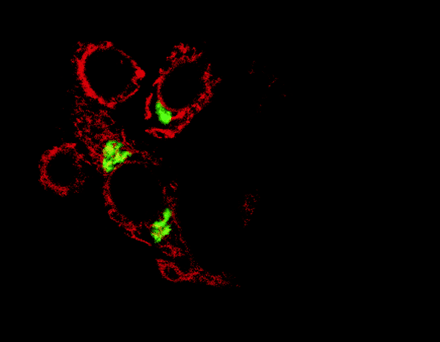Accessory Proteins in the Biogenesis of G Protein-Coupled Receptors
- QYZ. E-mail qzhou{at}uci.edu; fax 949-824-4855.
Abstract
Intracellular accessory proteins can be critical for G protein–coupled receptor (GPCR) biogenesis, including aspects of GPCR trafficking. Recent discoveries include the identification of multiple membrane-associated proteins that dictate not only the intracellular sequestration and/or transport of GPCRs, but also modulate—quite dramatically—GPCR ligand specificity subsequent to delivery to the cell surface. These exciting discoveries have shifted earlier paradigms of GPCR functionality.

Proteins that reside in the endoplasmic reticulum, such as the dopamine receptor-associated DRiP78 protein (shown in red)
are being increasingly discovered as essential for the transport of G protein-coupled receptors through the Golgi apparatus
(green) and to their destinations at the cell surface. [Reprinted with permission from Nature Cell Biology.]
- © American Society for Pharmacology and Experimental Theraputics 2001



